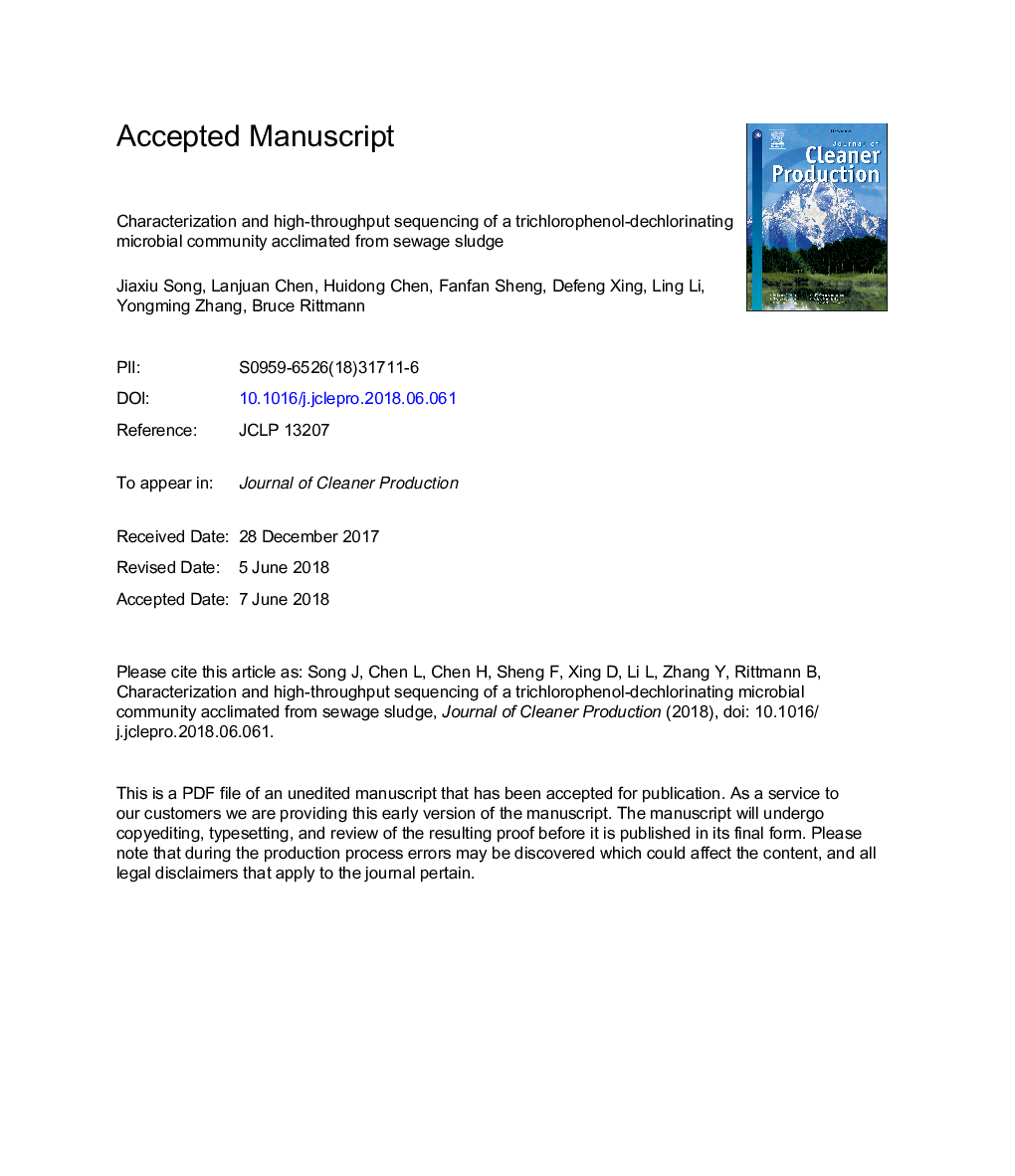| Article ID | Journal | Published Year | Pages | File Type |
|---|---|---|---|---|
| 8093812 | Journal of Cleaner Production | 2018 | 22 Pages |
Abstract
This study reports the dechlorination characteristics of acclimated biomass, high-throughput sequencing of the 16Sribosomal RNA (rRNA) gene harbored by the microorganisms, and analysis of the relation between the dechlorination function and community structure. Anaerobic 2,4,6-trichlorophenol (TCP)-dechlorinating biomass was acclimated from active sludge, and it showed a high TCP-dechlorination rate. It dechlorinated TCP only at the ortho-position, with 4-chlorophenol as the terminal product. Illumina Hiseq sequencing analyses of a 16SrRNA gene amplicon indicated that the abundance of the phyla Bacteroidetes and Firmicutes doubled in the acclimation process. Compared with that in raw sludge, Betaproteobacteria disappeared from acclimated biomass, and Deltaproteobacteria was replaced by sulfate-reducing bacteria (SRB) including Desulfobulbus, Desulfovibrio, Desulfomicrobium, and Syntrophus. Syntrophomonas of the phylum Firmicutes predominated (abundance 6.7%), and it was responsible for the high efficacy of dechlorination. Dechlorinators included Dechloromonas, Clostridium, SRB and Geobacter. The emergence of SRB provided microbiological evidence of the sulfate-reducing ability of the dechlorinating biomass. Propionicimonas was discovered during this study, and it is known to produce vitamin B12, which is an essential factor for reductive dehalogenase enzymes. The core microbiome resulted in the high dechlorination rate.
Keywords
Related Topics
Physical Sciences and Engineering
Energy
Renewable Energy, Sustainability and the Environment
Authors
Jiaxiu Song, Lanjuan Chen, Huidong Chen, Fanfan Sheng, Defeng Xing, Ling Li, Yongming Zhang, Bruce Rittmann,
